M.E and I just returned from visiting Istanbul, Turkey. It was one of those places on the check list you always wanted to visit. Living in the Middle East gives you the opportunity to visit some of these places. Places that seem a world away, are now in your backyard. A 3 hour 55 minute flight and we were in Istanbul, it technically was an overnight flight. We departed 1:30 at night and with only an hours sleep on the plane we arrived at 5:50am in the morning in Istanbul airport. We were picked up by the hotel cab service and arrived at the hotel just as it was opening. Our hotel was right in the middle of Sultanahmet the heart of the old city in Istanbul, 75% of the attractions are in this area, all within easy walking distance. After having breakfast at the hotel we decided to go to the furthest sight and work our way back. To our surprise we did not have any problem staying up the rest of the day. I think there is such an energy to the city that we got sweep up in the excitement of this vibrant place.
putting it on the map Link
Istanbul is the 6th most visited city in the world in 2014, just behind NYC in 5th place. It is consider the crossroads between Europe and Asia, where East meets West. Founded in 660BC as Byzantium, the ancient Greek city developed into one of the most significant cities in history. Renamed Constantinople in 330AD, for the next sixteen centuries served as the capital of four empires. The Roman Empire 330-395, The Byzantine Empire 395-1204 and 1261-1453, the Latin Empire 1204-1261, and the Ottoman Empire 1453-1922. Istanbul’s location along the silk road, the bridge between Europe and the Middle East and the sea route between the Black Sea and the Mediterrane has made it an eclectic global city. Istanbul has one of the fastest-growing metropolitan economies in the world.
Many of the historic sites reflect a Byzantine and Ottoman architecture but Roman architecture can still be seen blending in, in many of the buildings. Within a minute walk from our hotel were the two main buildings dominating the panoramic skyline of Istanbul, the Hagia Sophia and the Sultan Ahmet Mosque. The square that separates these two magnificent buildings has been a major public square of Istanbul throughout history. In Roman and Byzantine times it was known as the Hippodrome where the Imperial Palace, bathes, temples, arenas, were located and was the center for gatherings, entertainment, celebrations and sports.
The Hagia Sophia was commissioned by the Byzantine Emperor, constructed in 537 and served as an Eastern Orthodox cathedral until 1453. The Ottoman Empire turned it into a mosque from 1453 to 1931. In 1935 it reopened as a museum. It is famous for its massive dome and is considered the greatest surviving example of Byzantine architecture, it is said to have changed the history of architecture. It was the world’s largest cathedral for nearly a thousand years until 1520. Throughout its history earthquakes in the area, on several occasions, damaged the dome and in some cases the dome completely collapse. The building has undergone repeated repair throughout the years. When Constantinople was conquered by the Ottoman Turks, the Turks were so impressed by the structure they made it into a mosque. The Christian relics were removed and many of the mosaics were plastered over and Islamic features were added. Its architect inspired many of the other mosques built by the Ottoman’s in Istanbul such as the Blue Mosque and the Rustem Pasha Mosque. In 1935 the first Turkish President transformed it into a museum. After many years of restoration work with supported by private companies and the WMF the marble floors and pillars were uncovered, the plaster was removed covering the beautiful mosaics, the dome repaired and the vast interior and its complex structure has been stabilized. There is still ongoing work to finish the restoration.
The Sultan Ahmet Mosque, better known as the Blue Mosque thanks to the impressive blue tiles that dominate the interior, was built by Saktan Ahemd the First during his rule of the Ottoman Empire in 1620. It still servers as a mosque today. It incorporates some of the Byzantine Christian elements of its neighbor the Hagia Sohpia and some traditional Islamic architecture and is considered to be the last great mosque of the classical period. It has one main dome eight secondary domes and six minarets. The interior is lined with more than 20,000 handmade iznik style tiles in more than 50 different tulip designs. There are also more than 200 stained glass windows allowing in natural light. The Blue Mosque is the first one of two mosques to have 6 minarets. The Sultan was criticized when it was revealed that the mosques was to have 6 minarets because it would have the same number of minarets as the Grand Mosque in Mecca, Saudi Arabia. He overcame this problem by ordering a seventh minaret be built at the Mecca mosque.
Fun Fact, Pope Benedict XVI visited the Blue Mosque on 30 Nov 2006. It is only the second papal visit in history to visit a Muslim place of worship.
Below are pictures of the Hagia Sophia and the Sultan Ahment Mosque or The Blue Mosque. I got carried away with all of the pictures, it is impossible to capture the beauty and size of these impressive monuments. Next up, more on Istanbul!
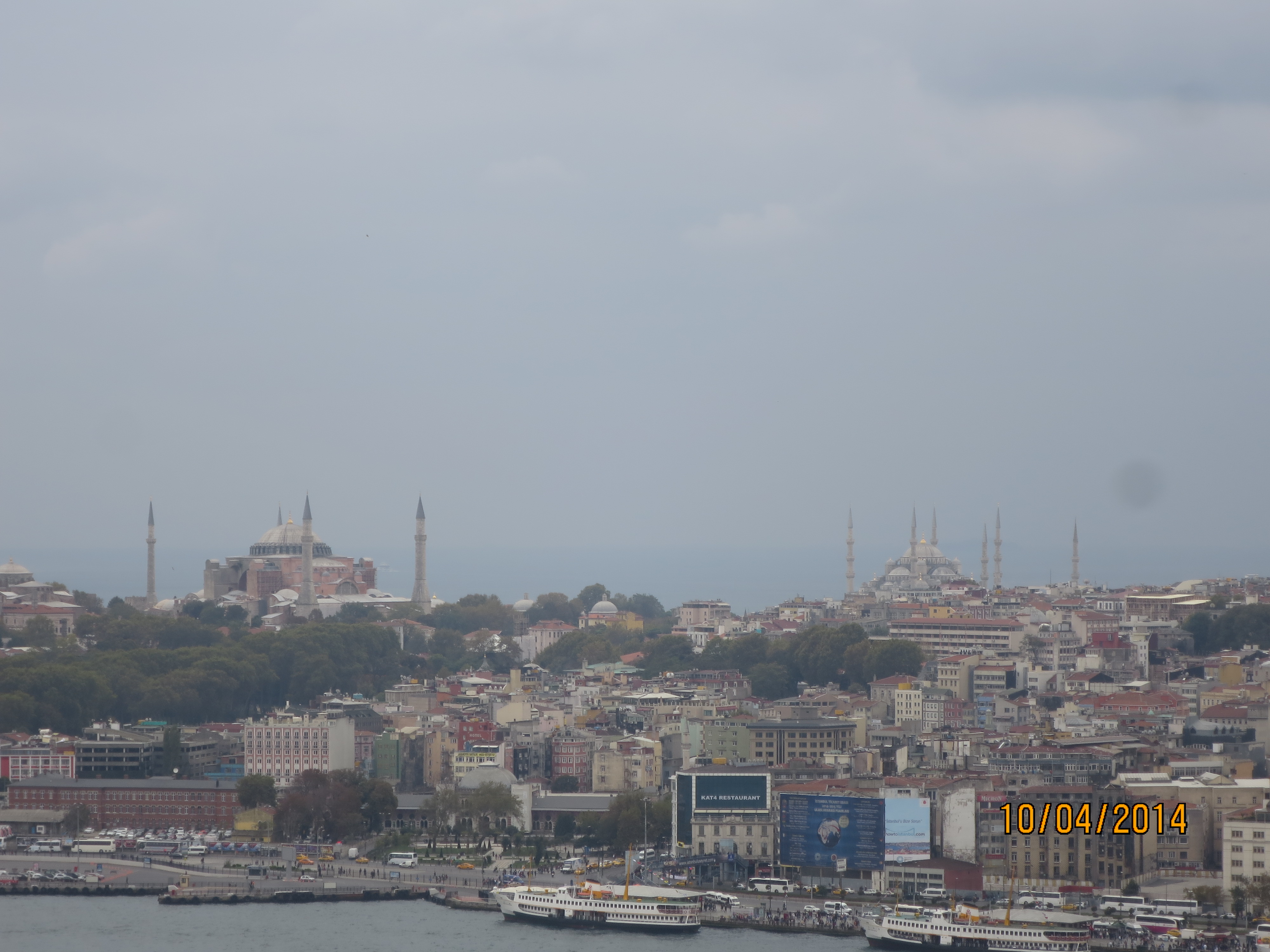
Hagia Sophia and the Blue Mosque, this picture was taken from across the river, trying to show the Istanbul skyline
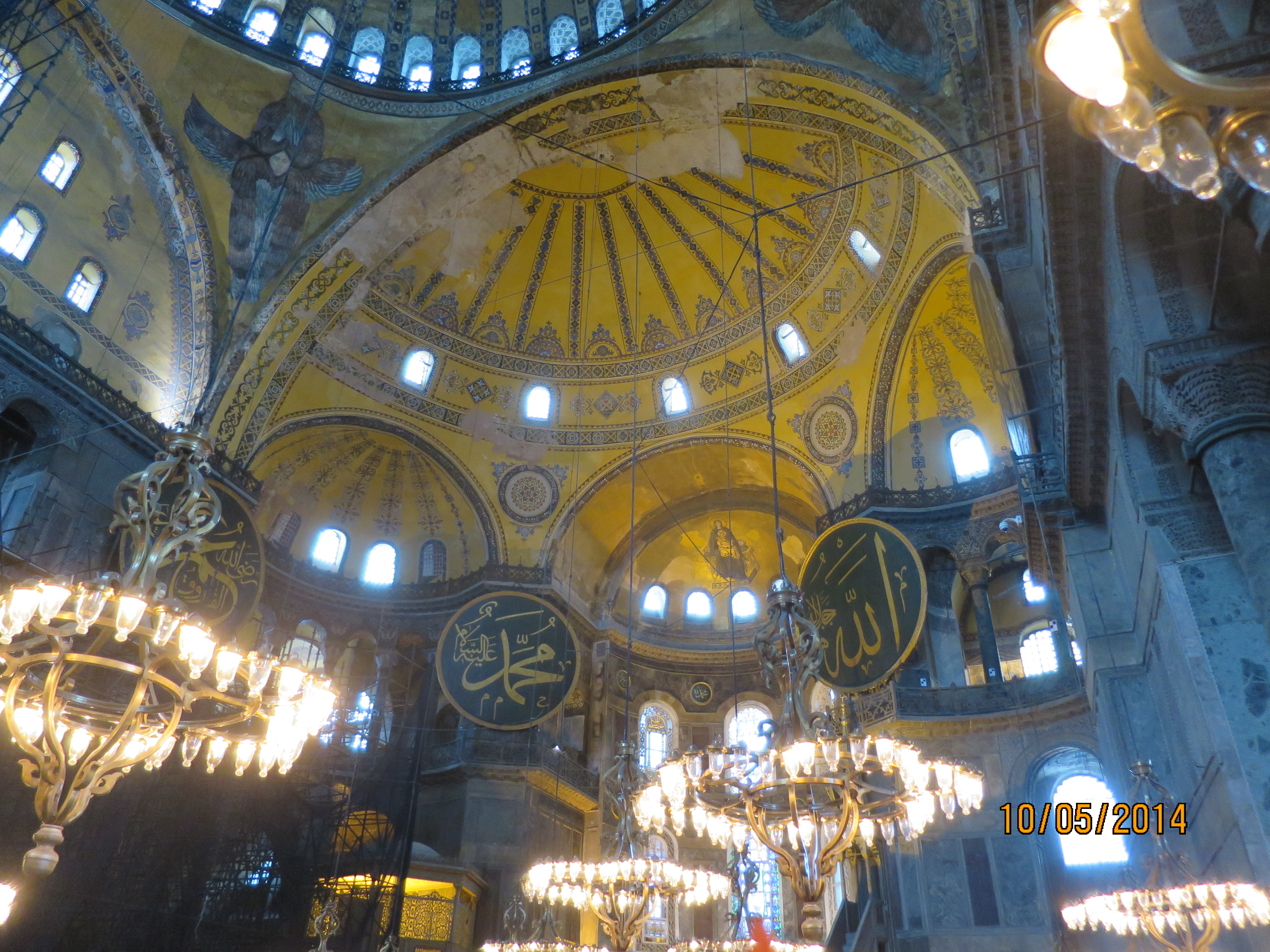
Islamic medallions inscribed with the names of Allah, Prophet Muhammad, in the center half dome a mosaic of Christ
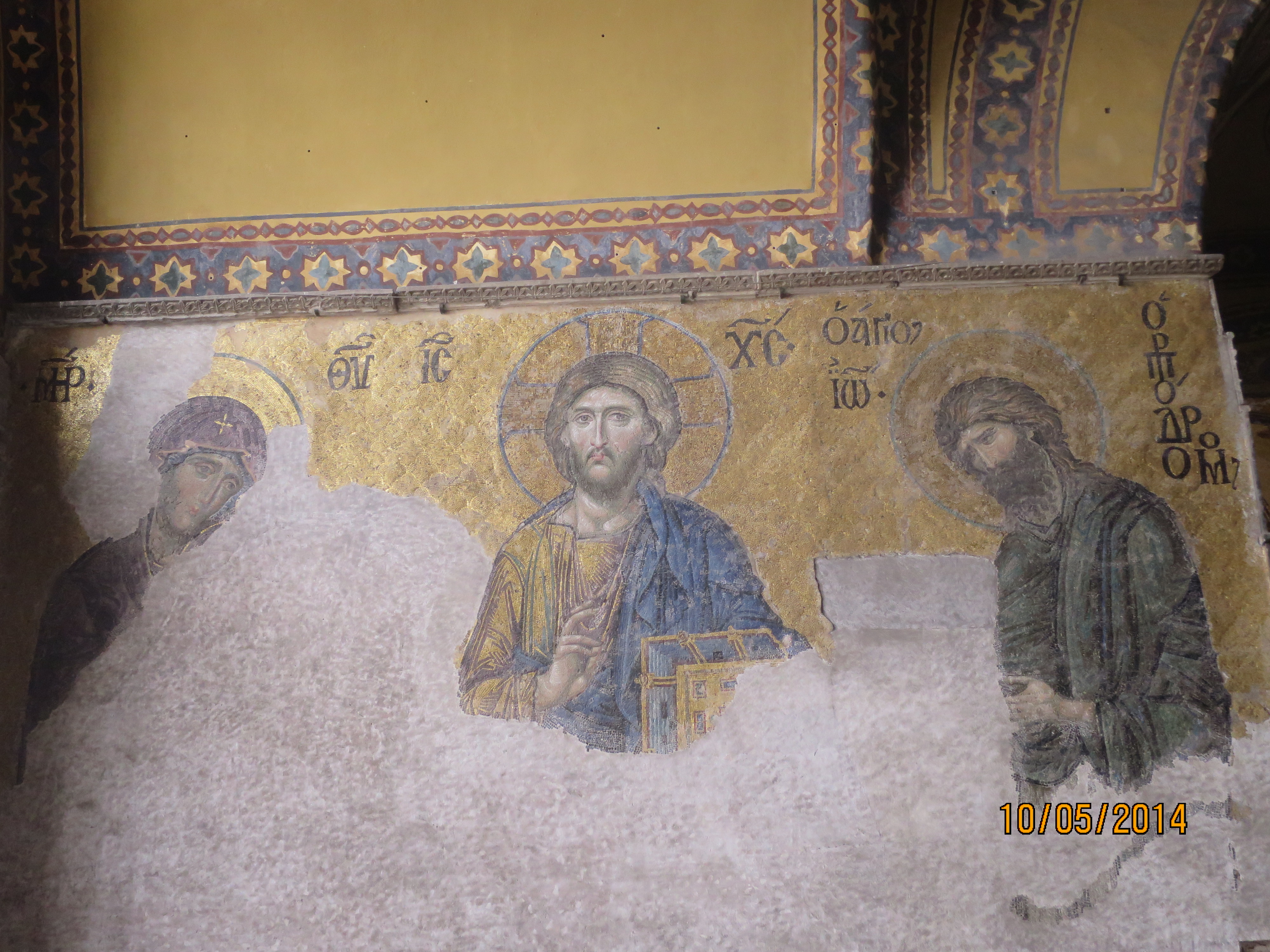
mosaics, Christ in the middle, John the Baptist on the right, Virgin Mary on the left, being restored

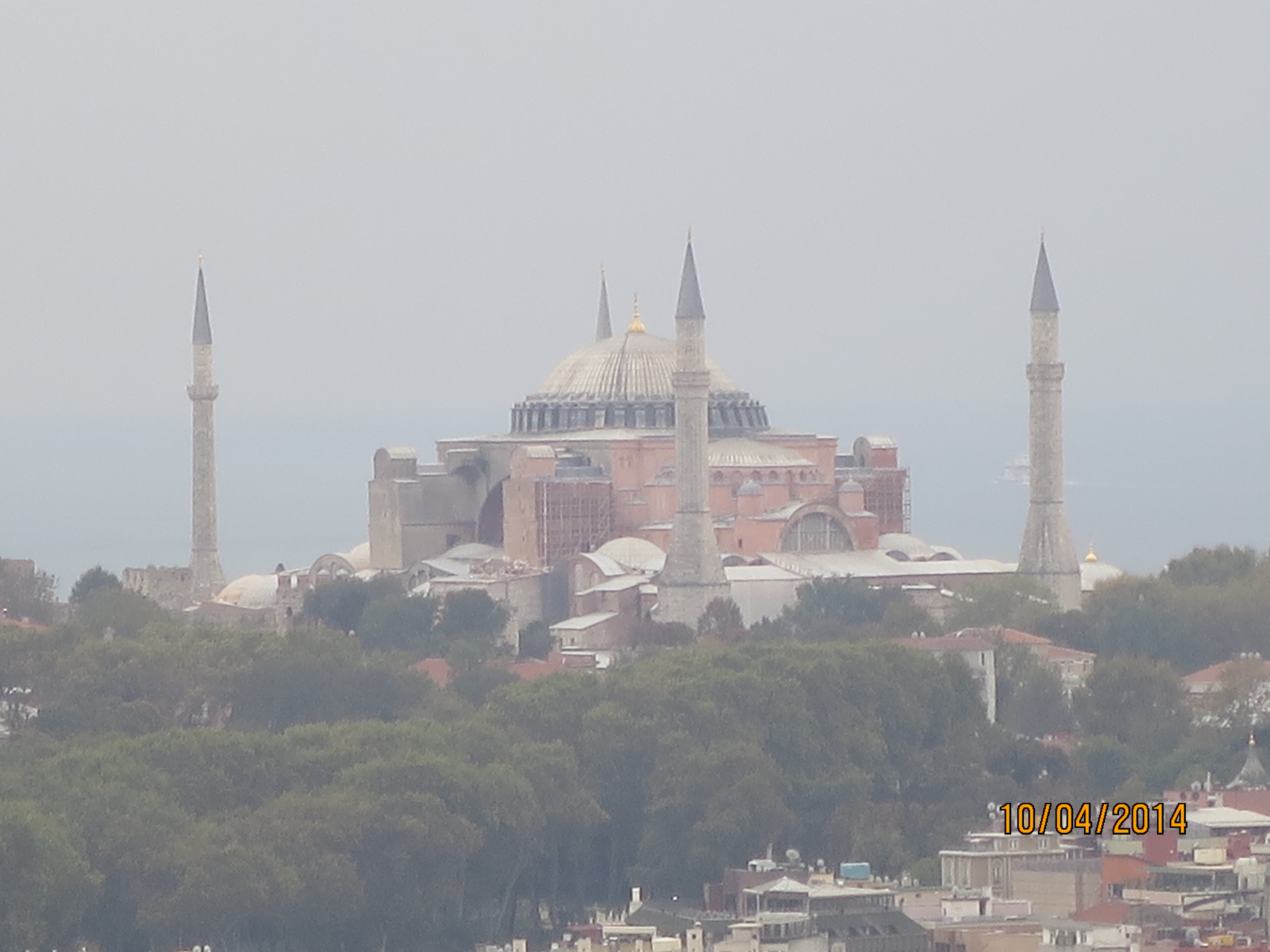
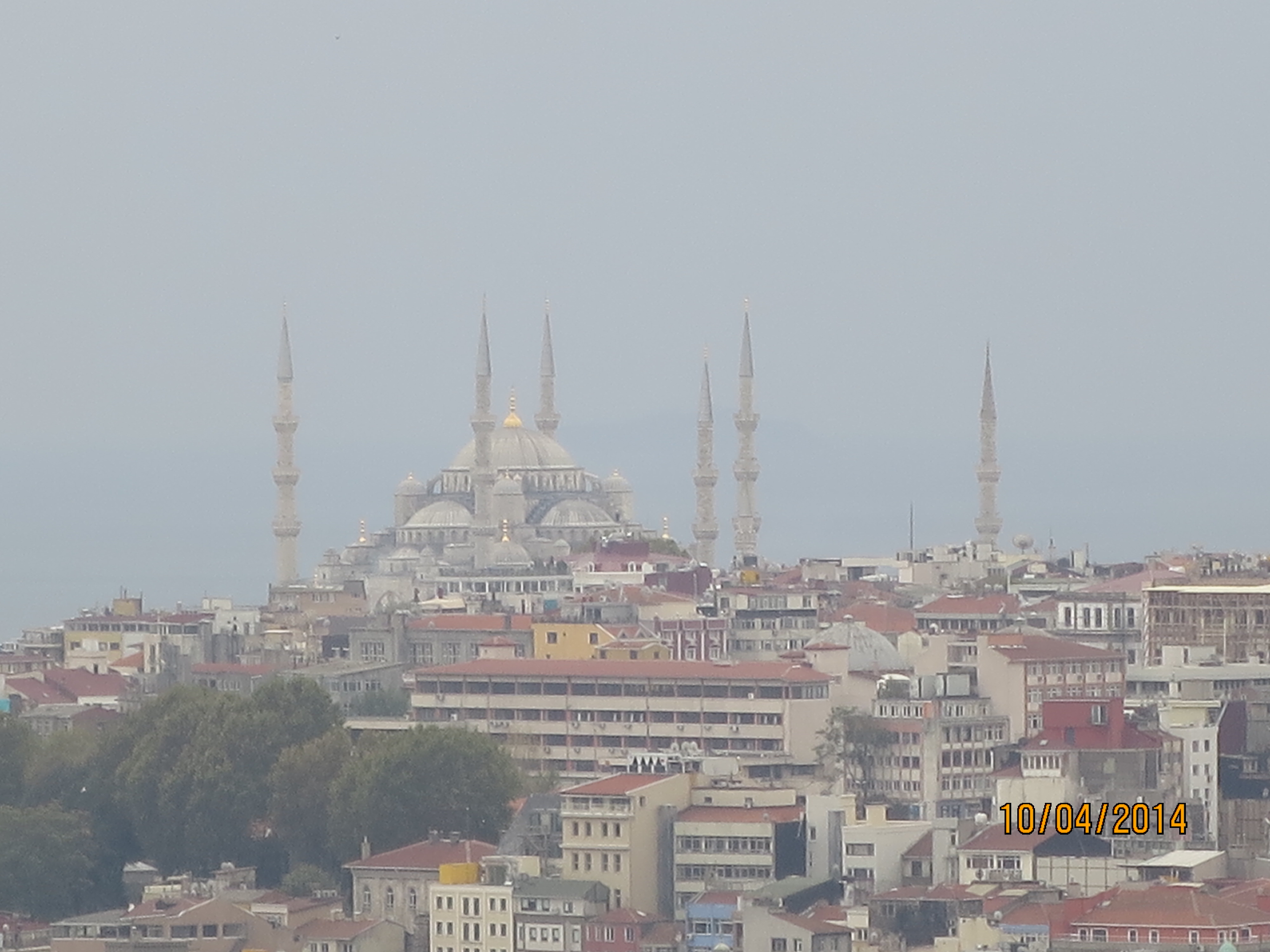
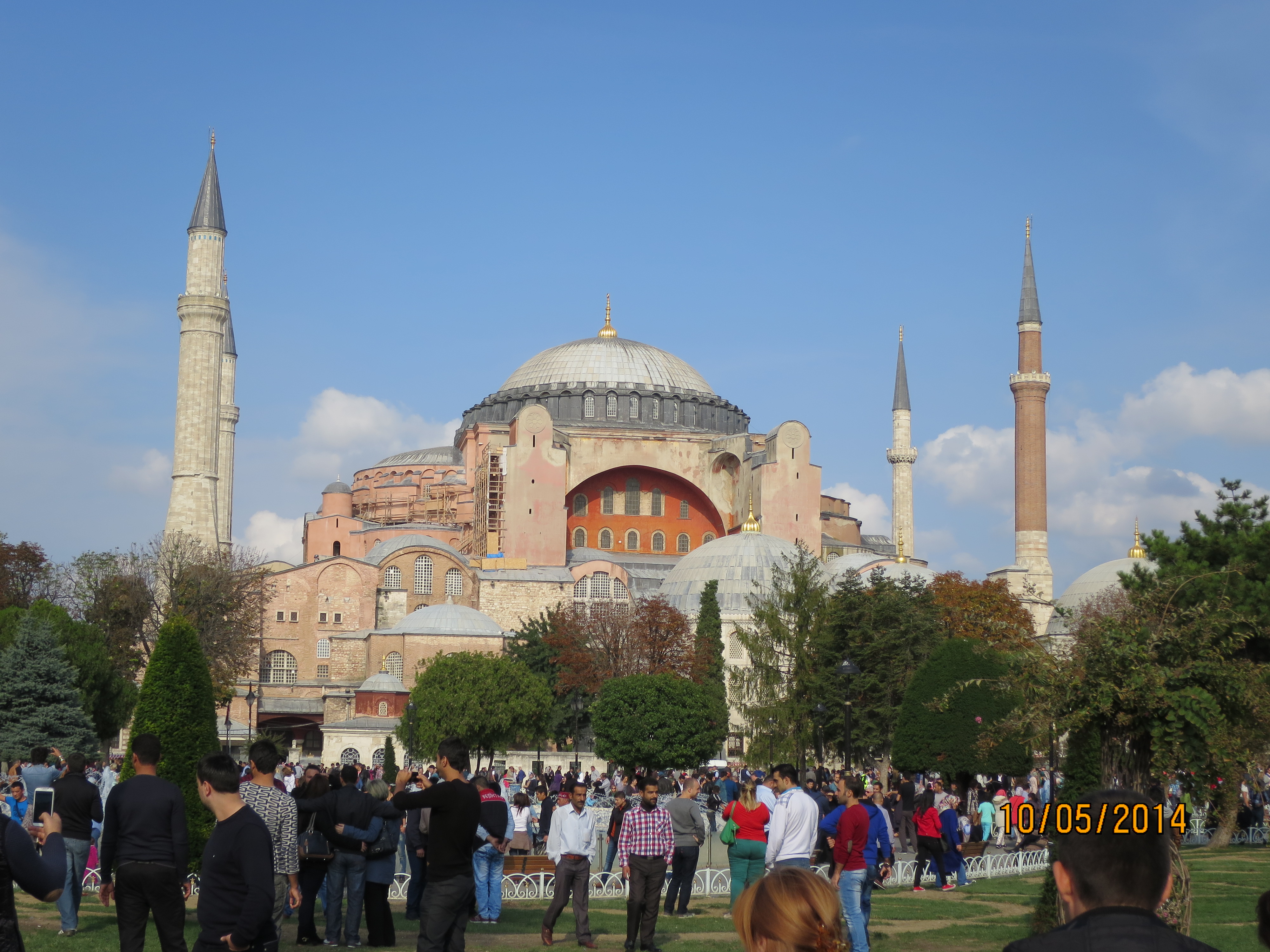
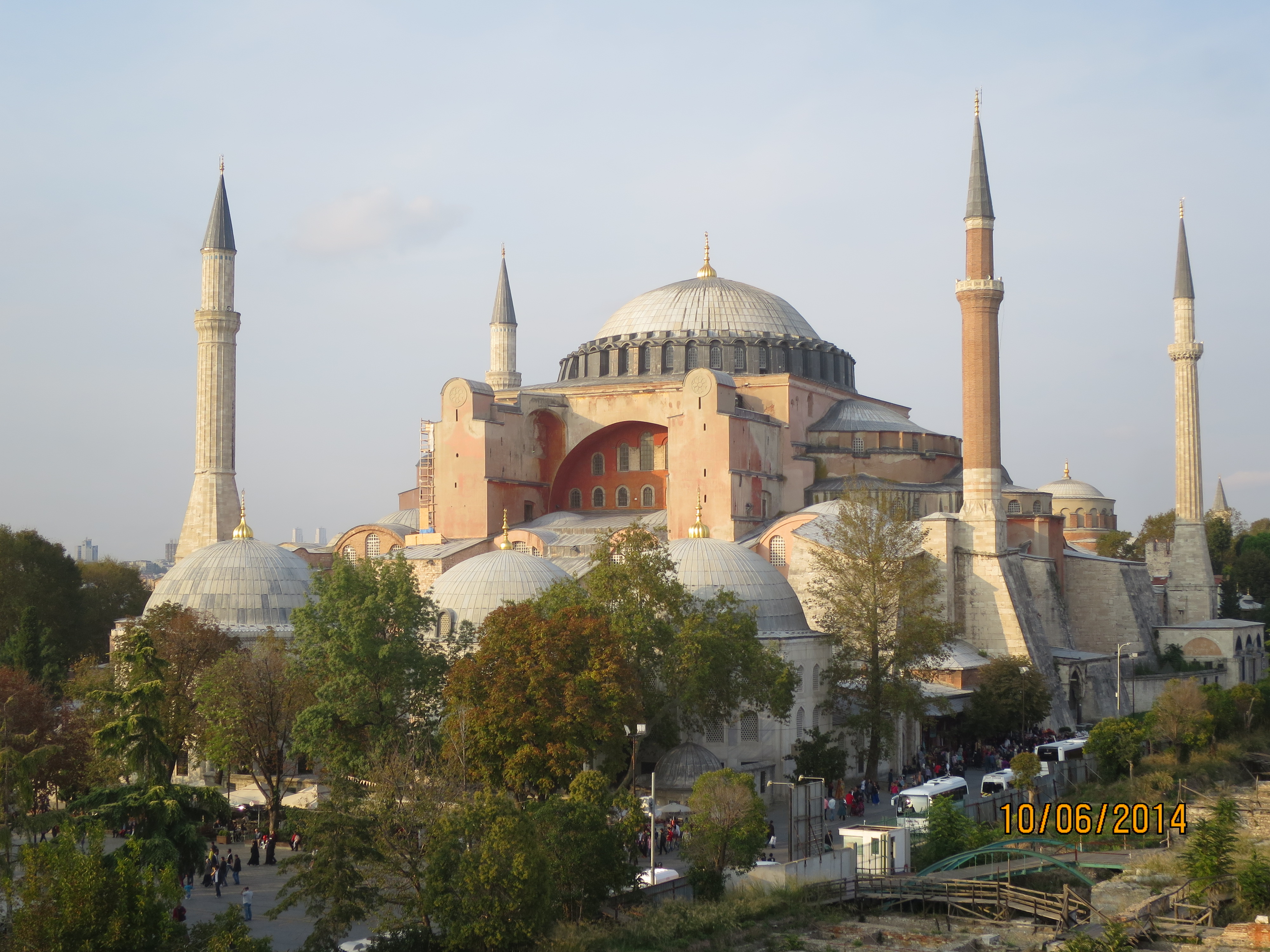
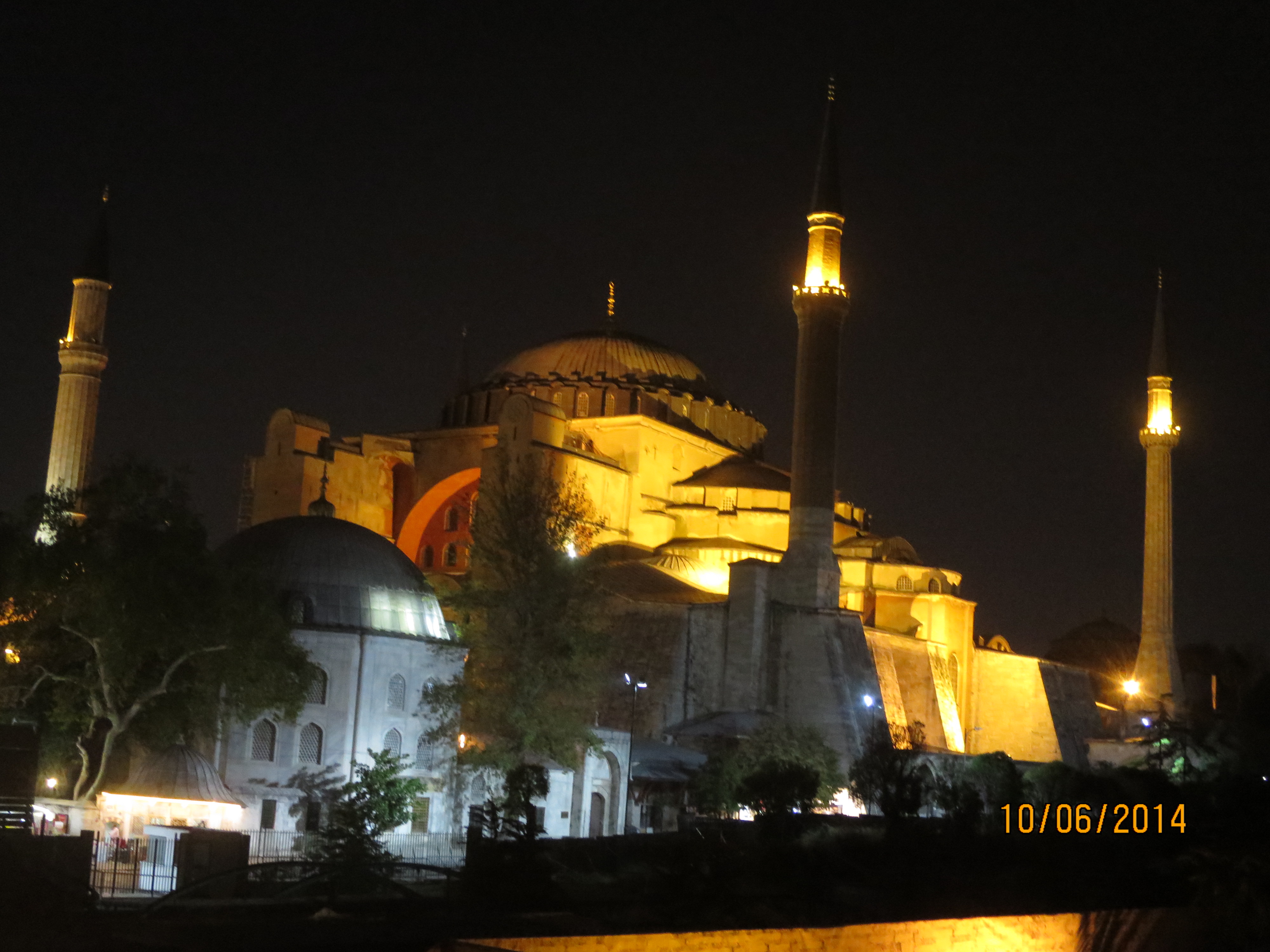
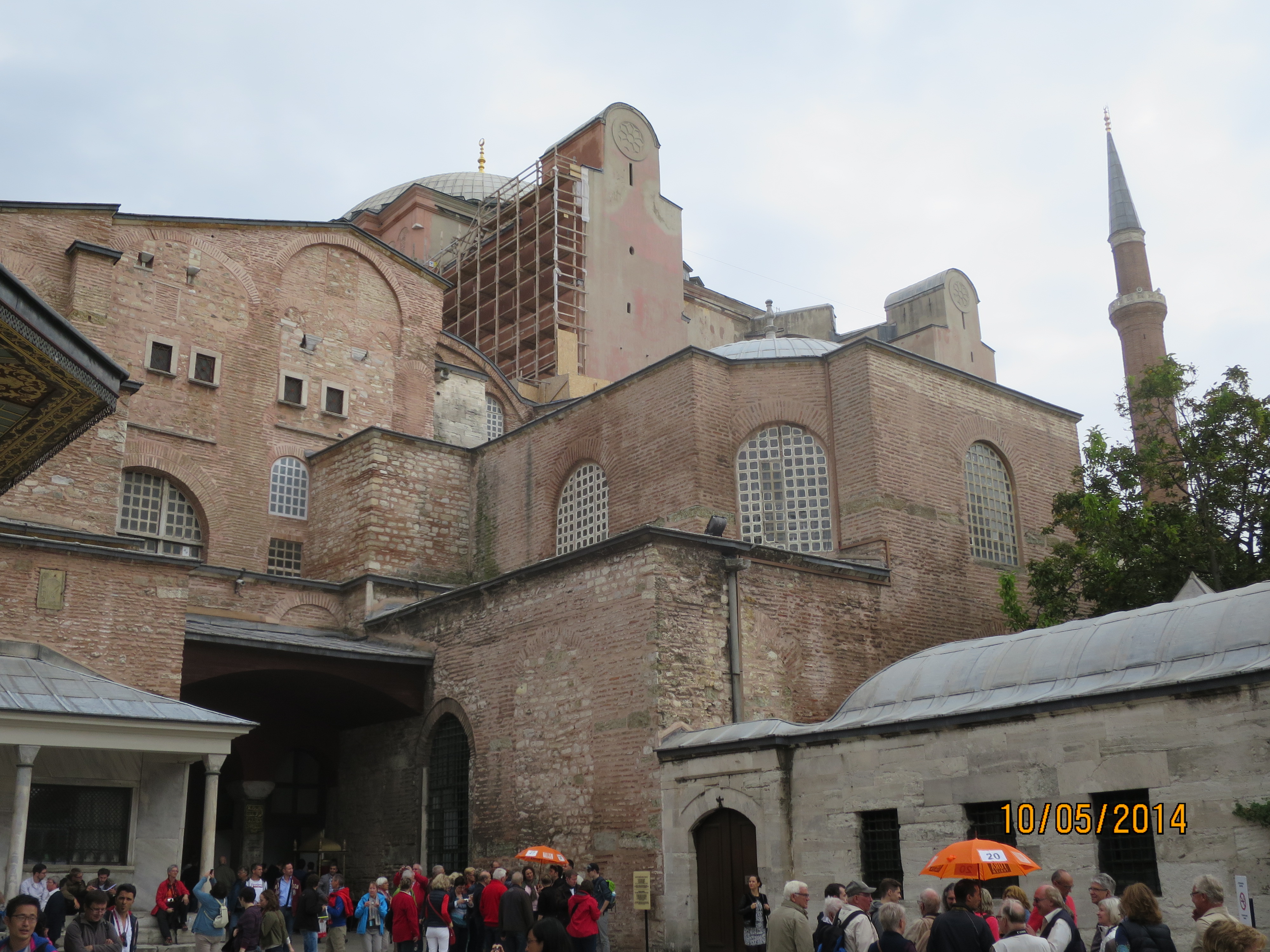
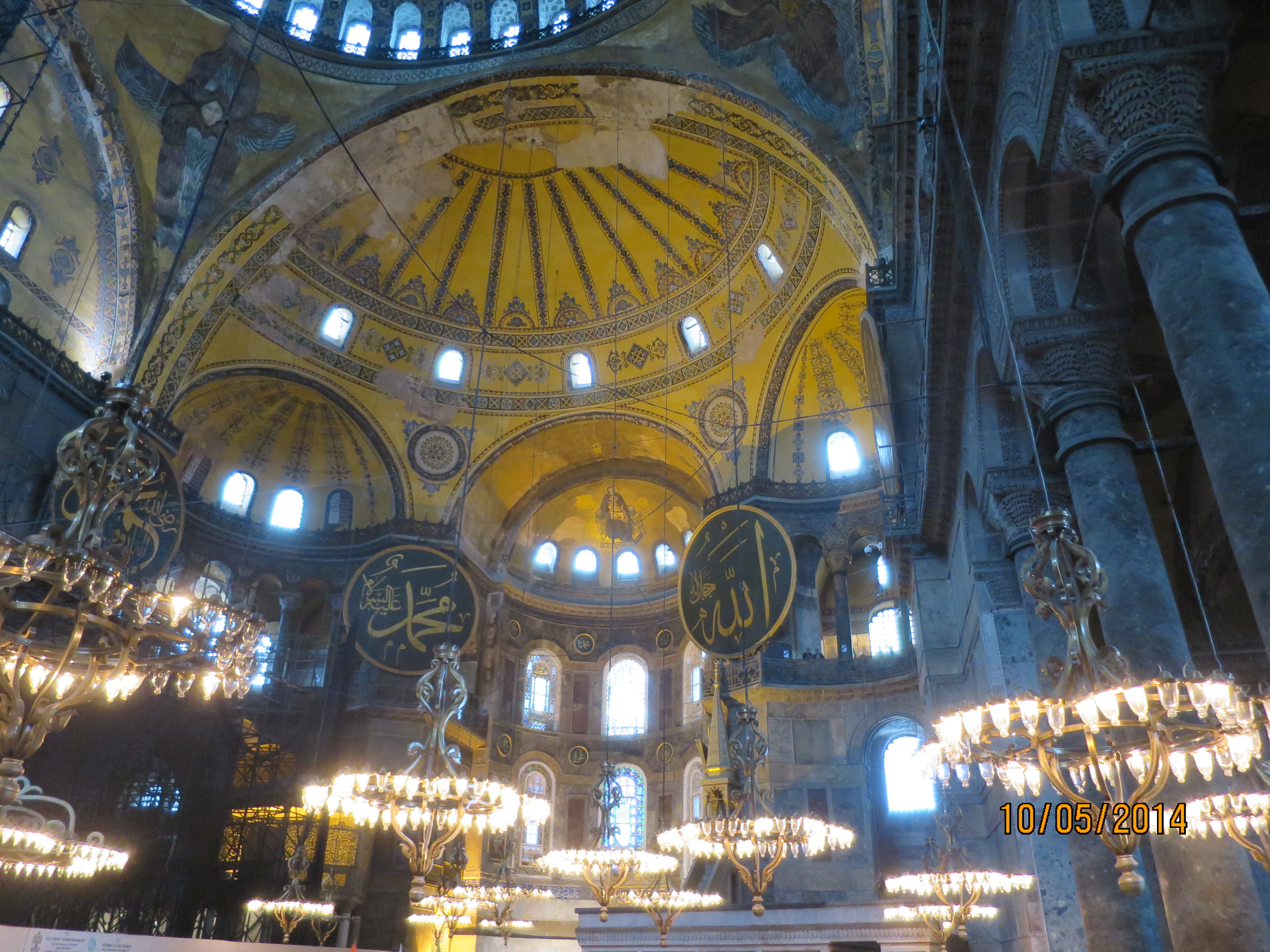
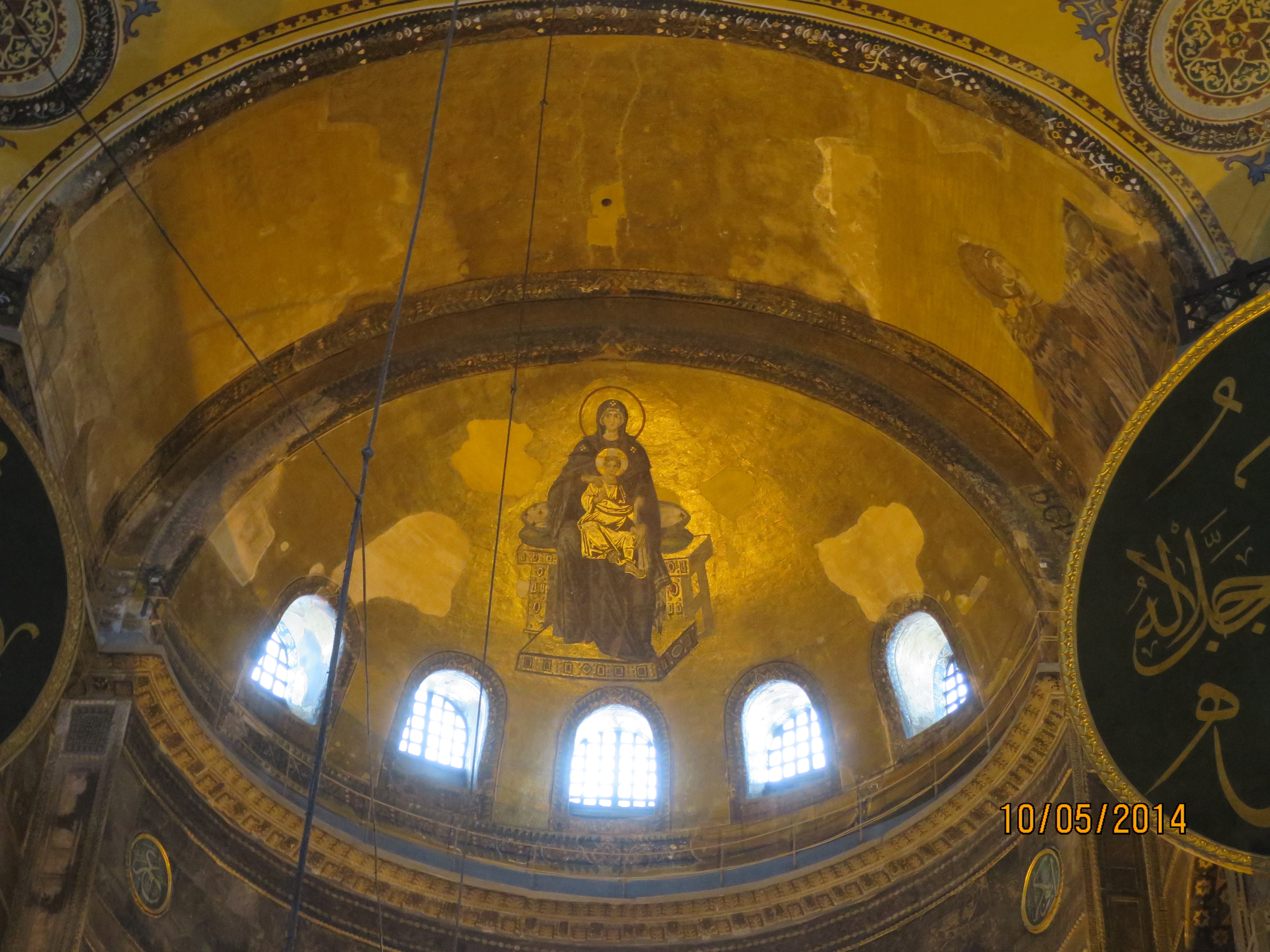
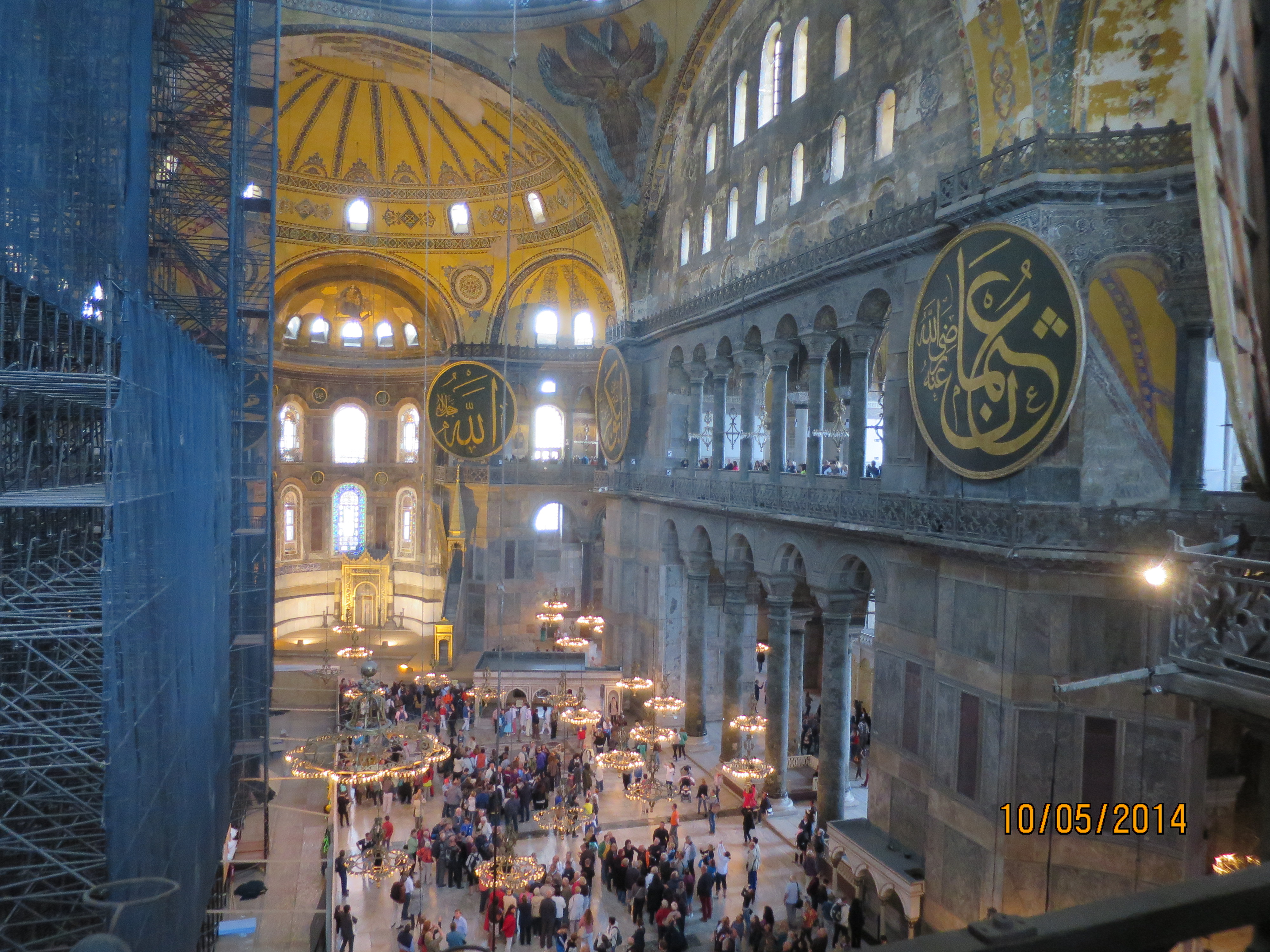
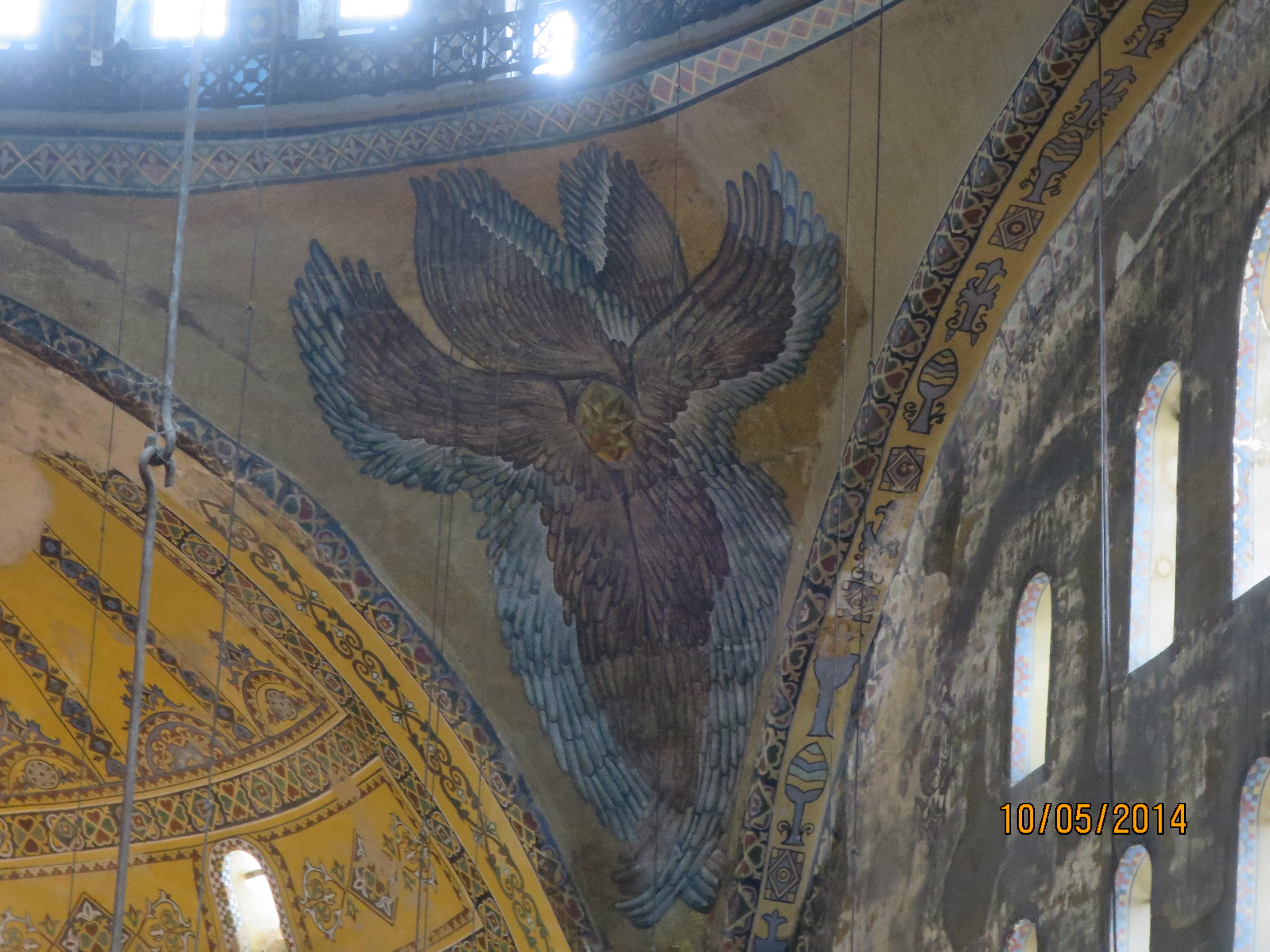
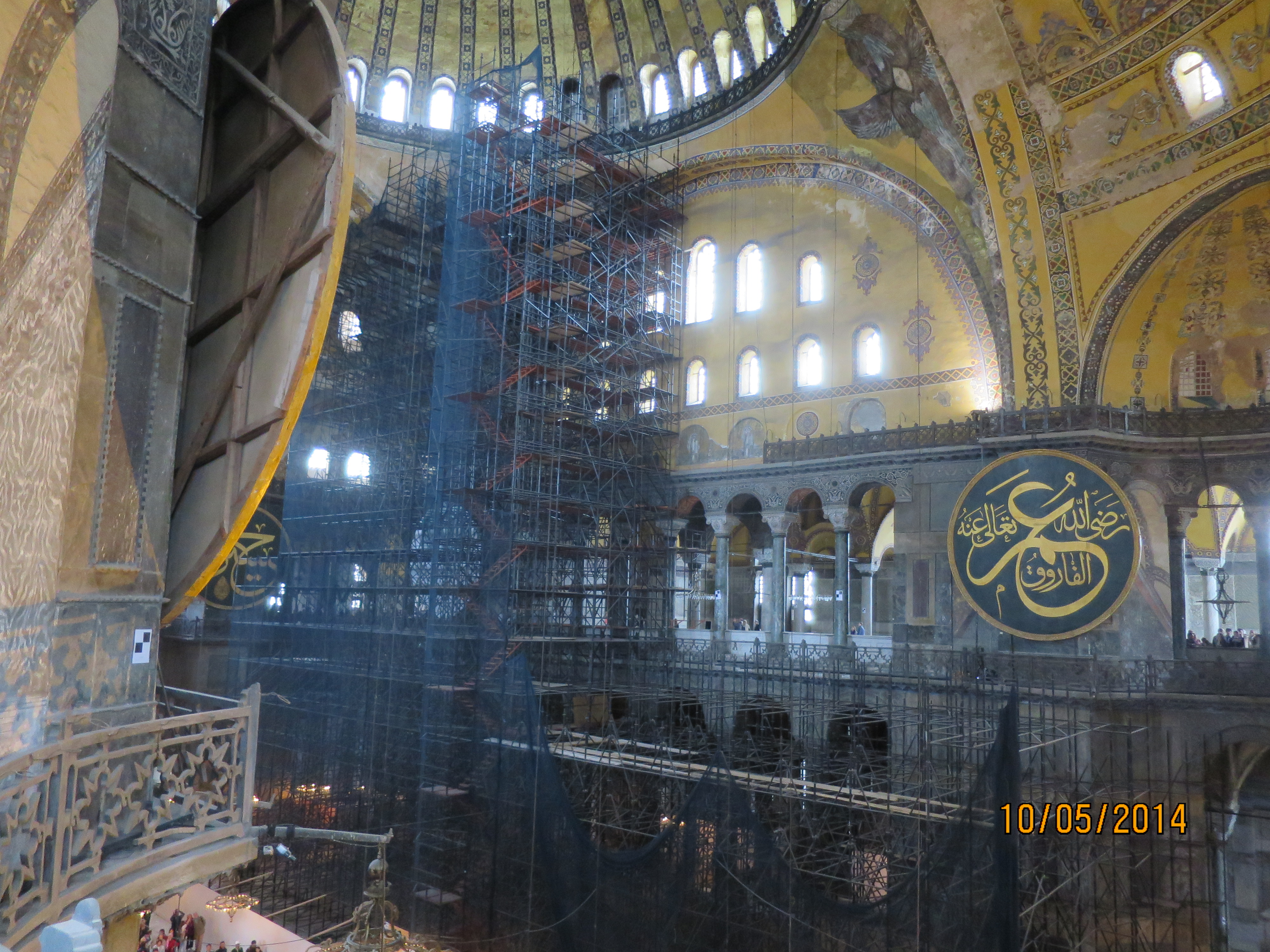
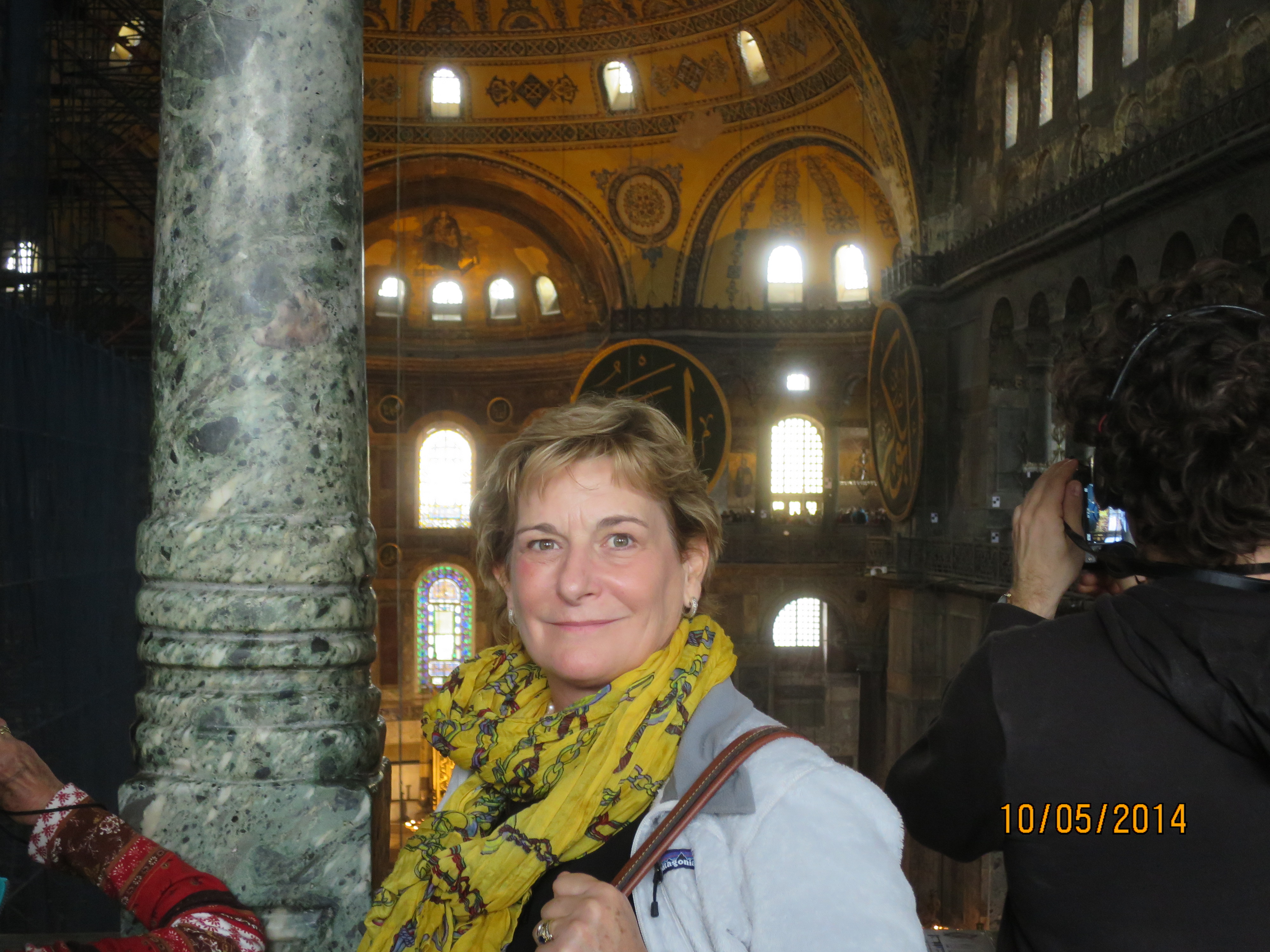
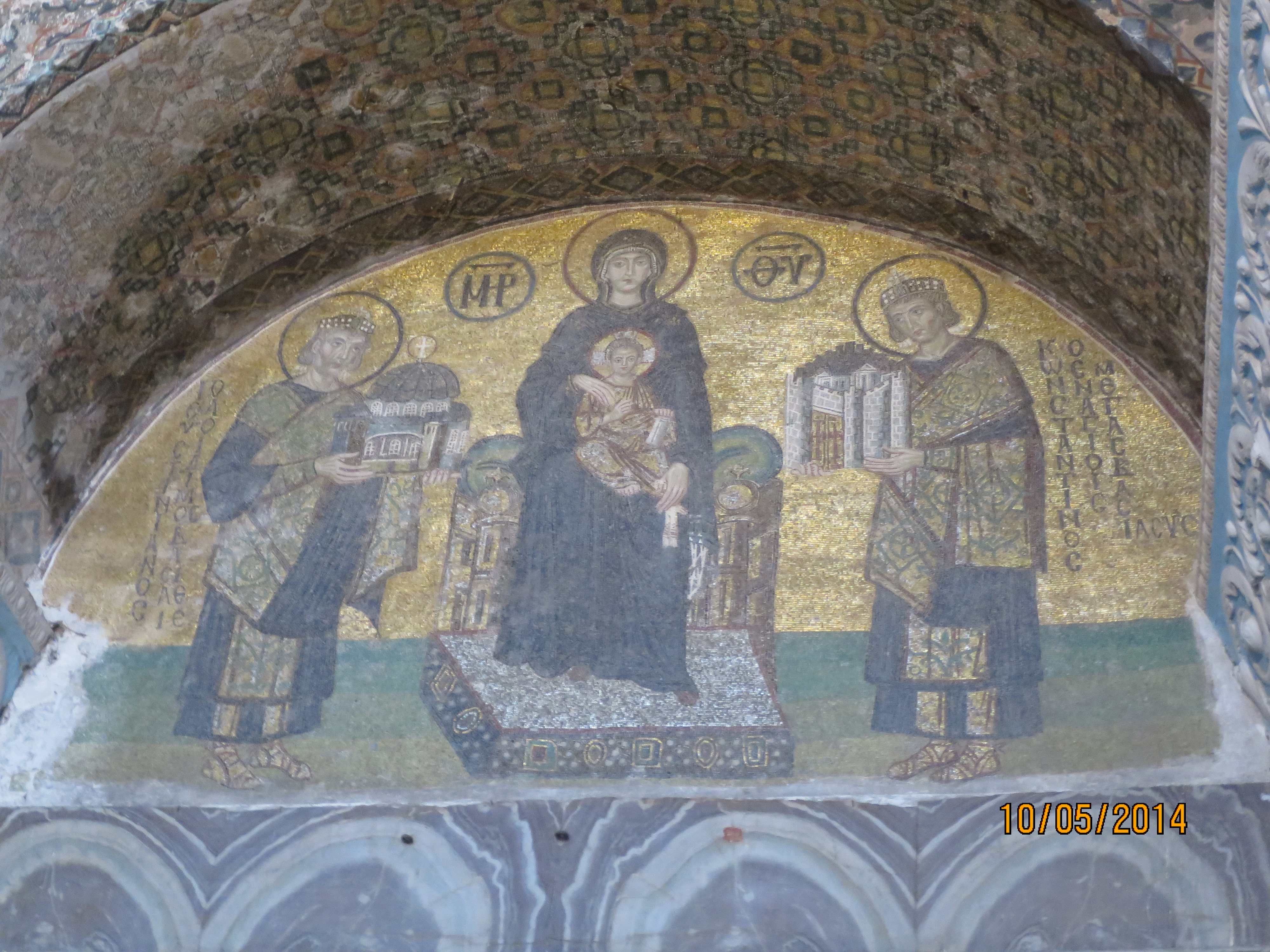
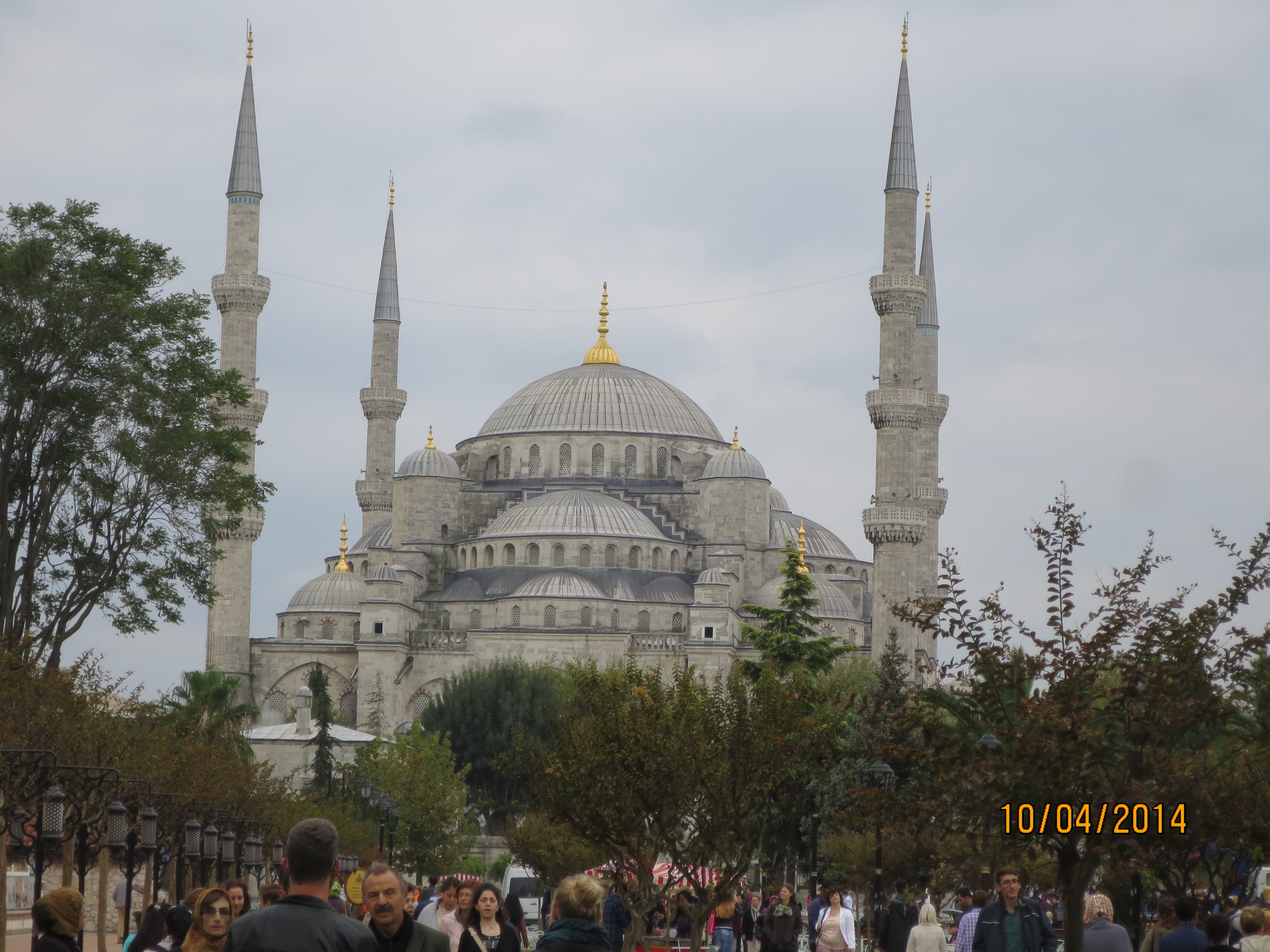
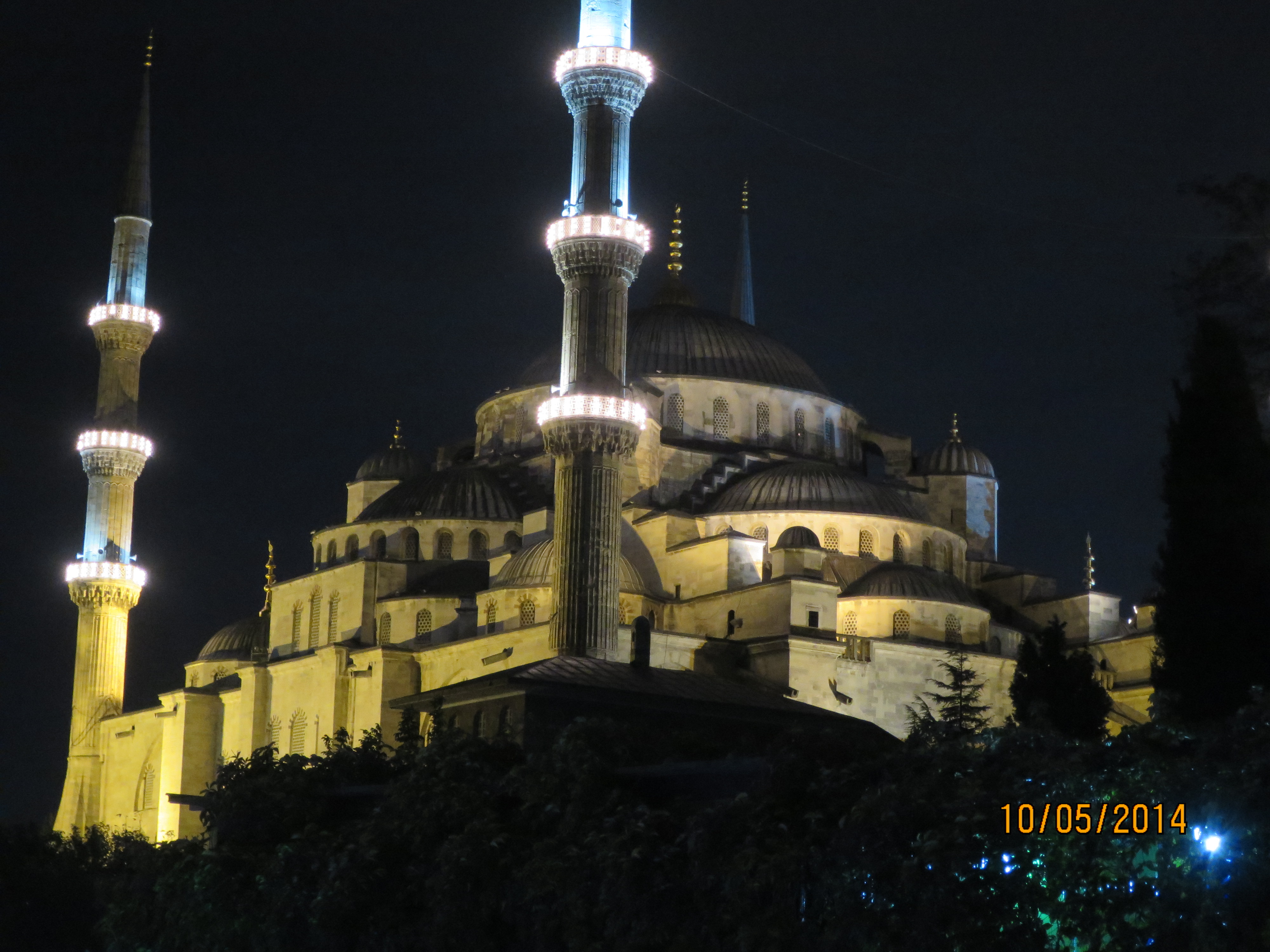
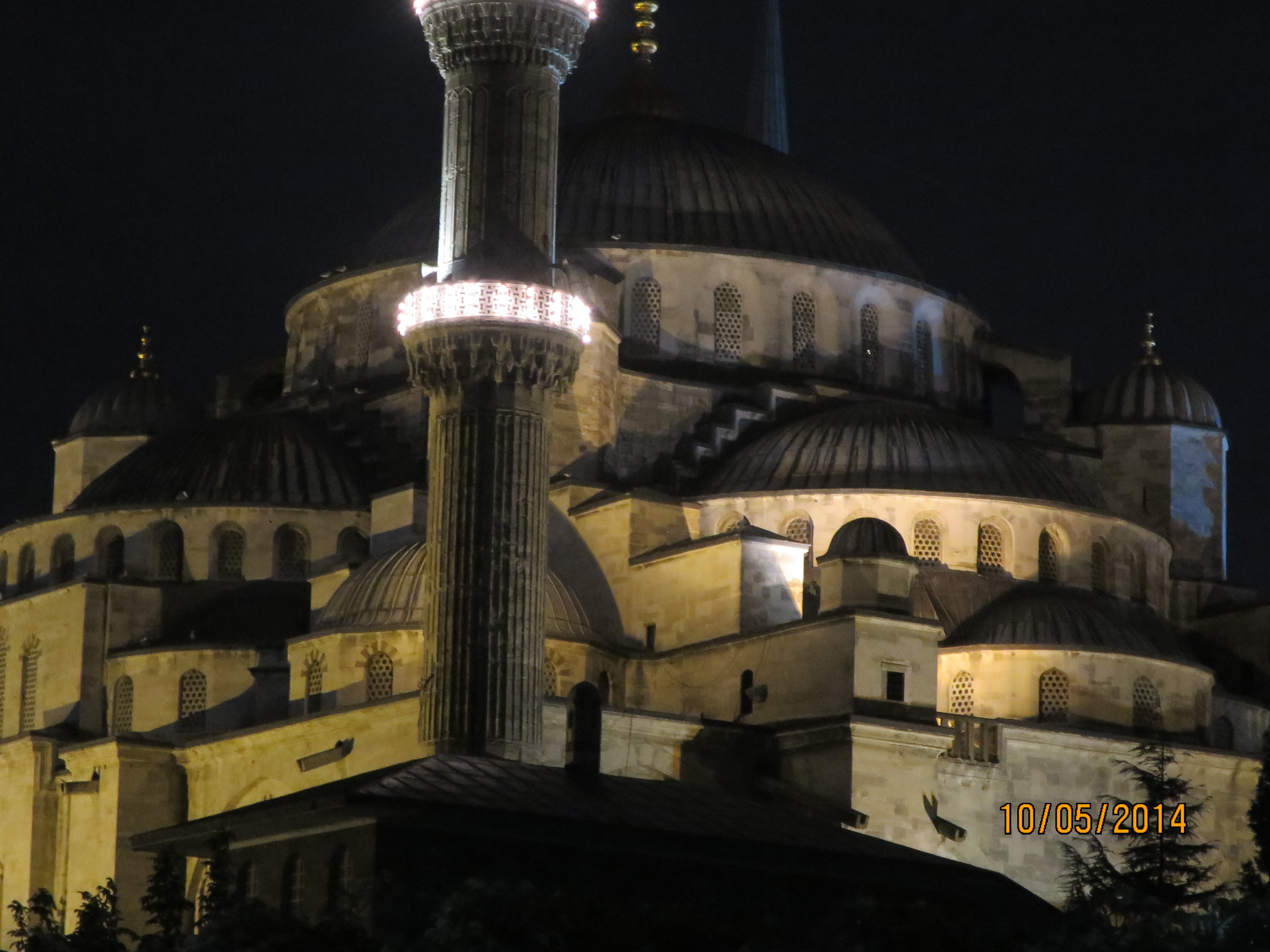
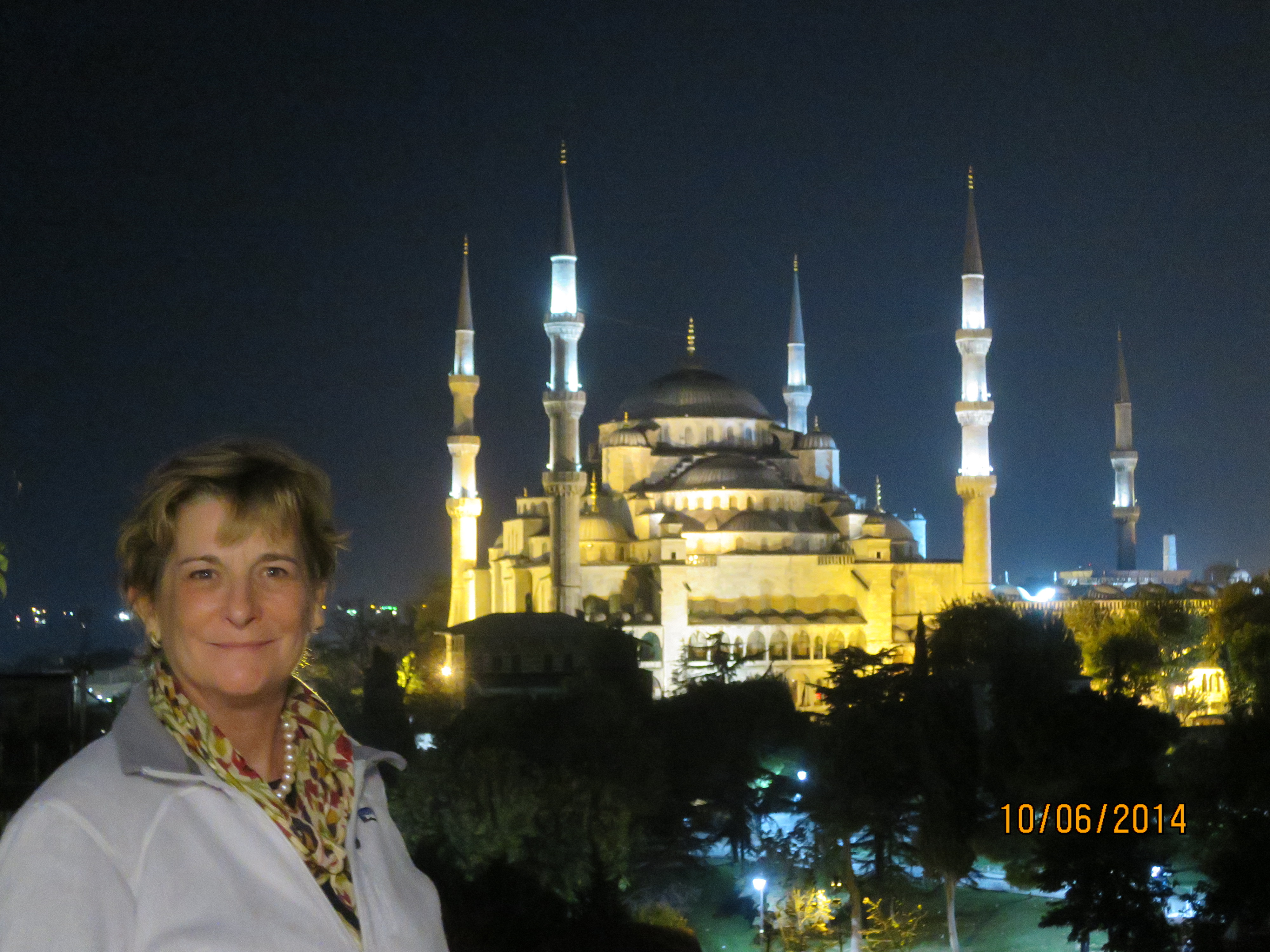
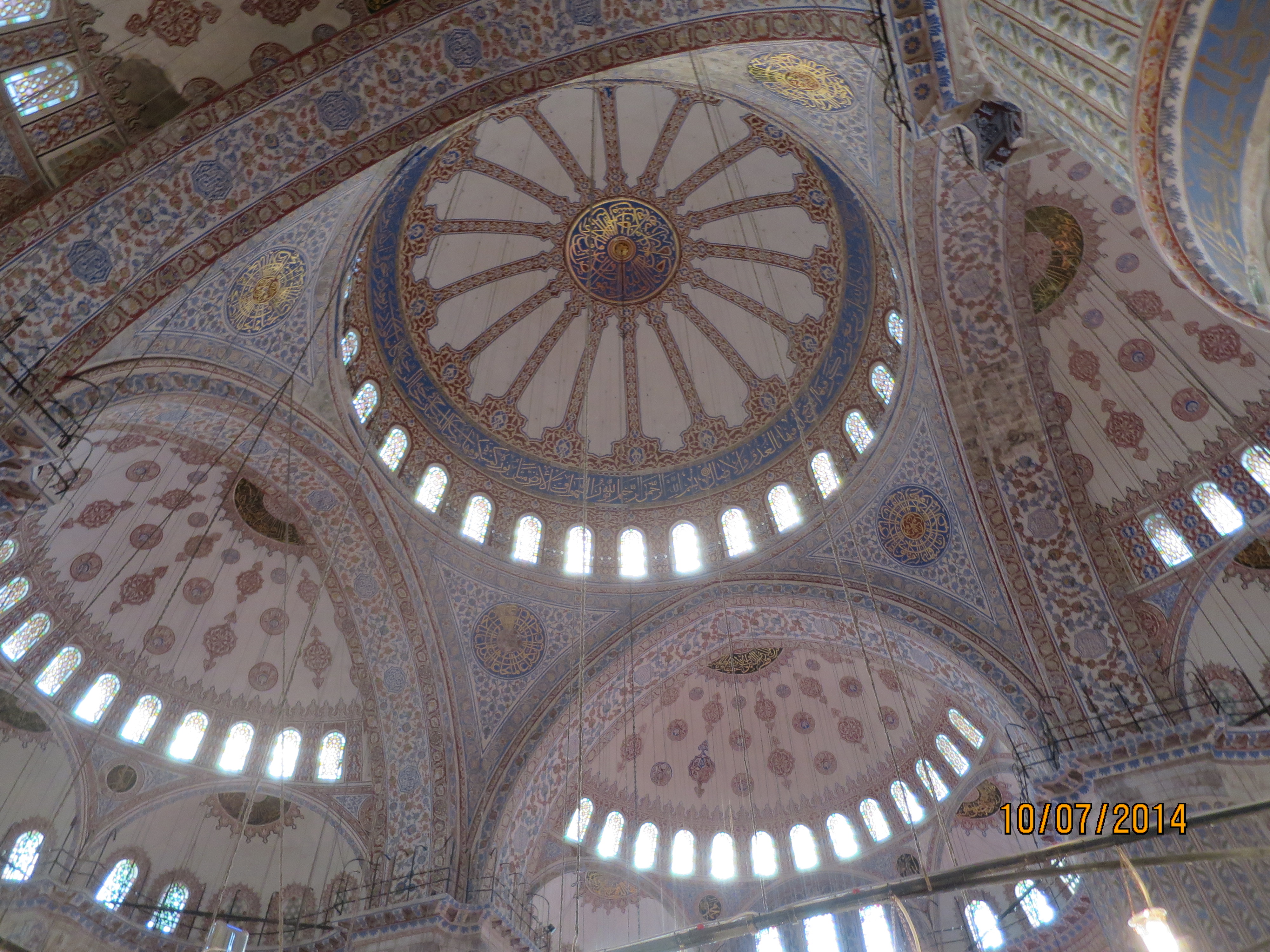
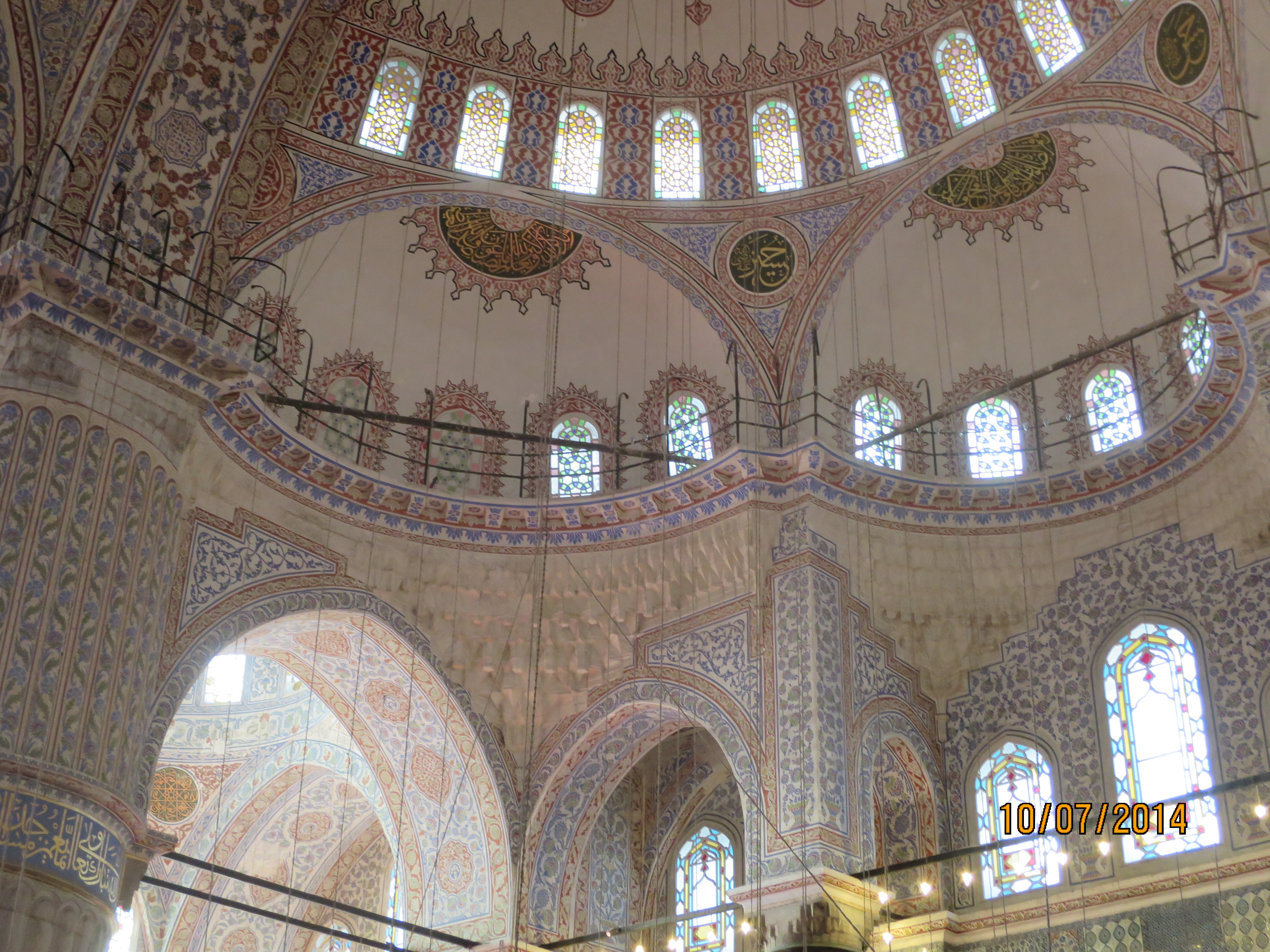
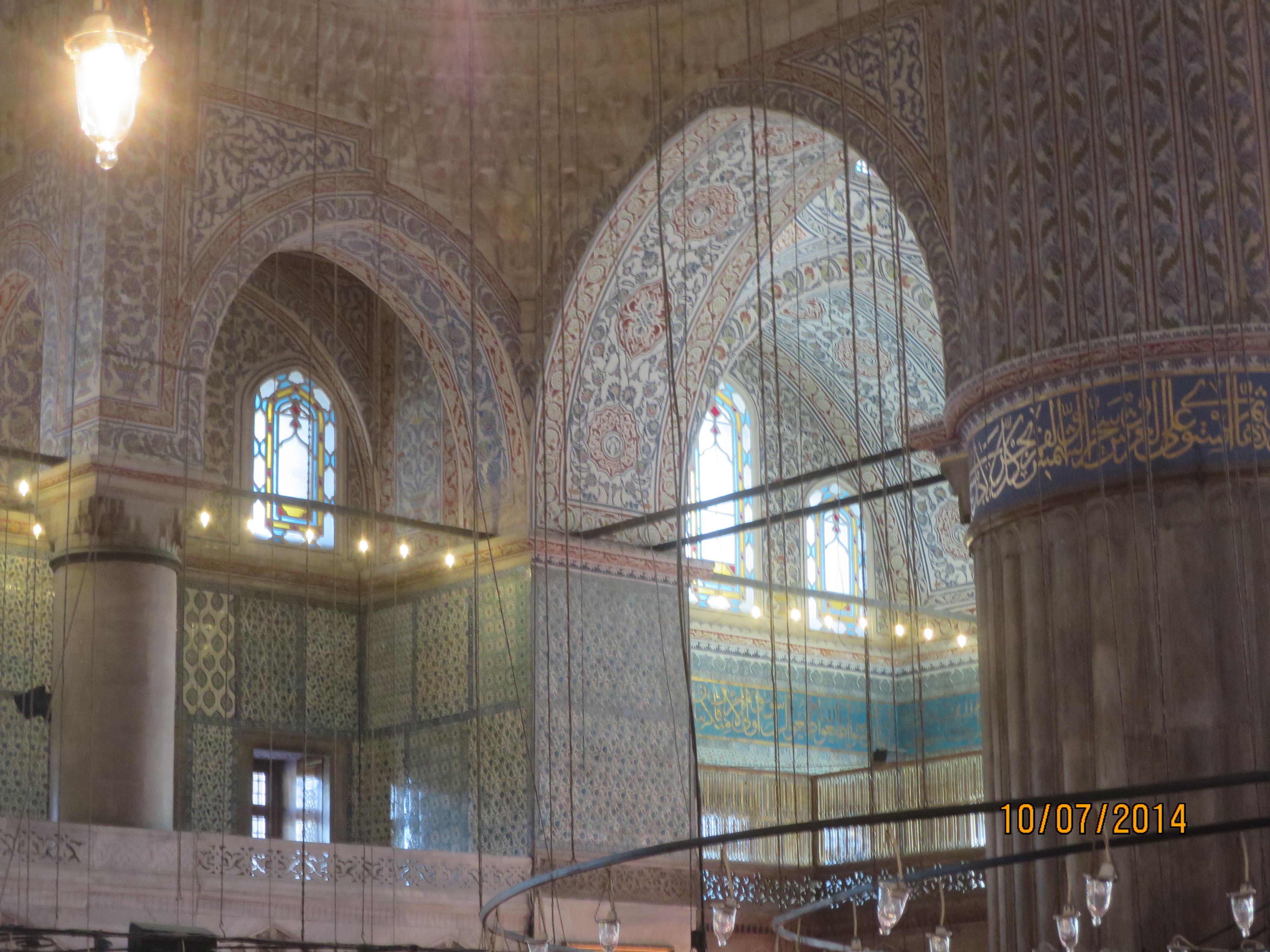
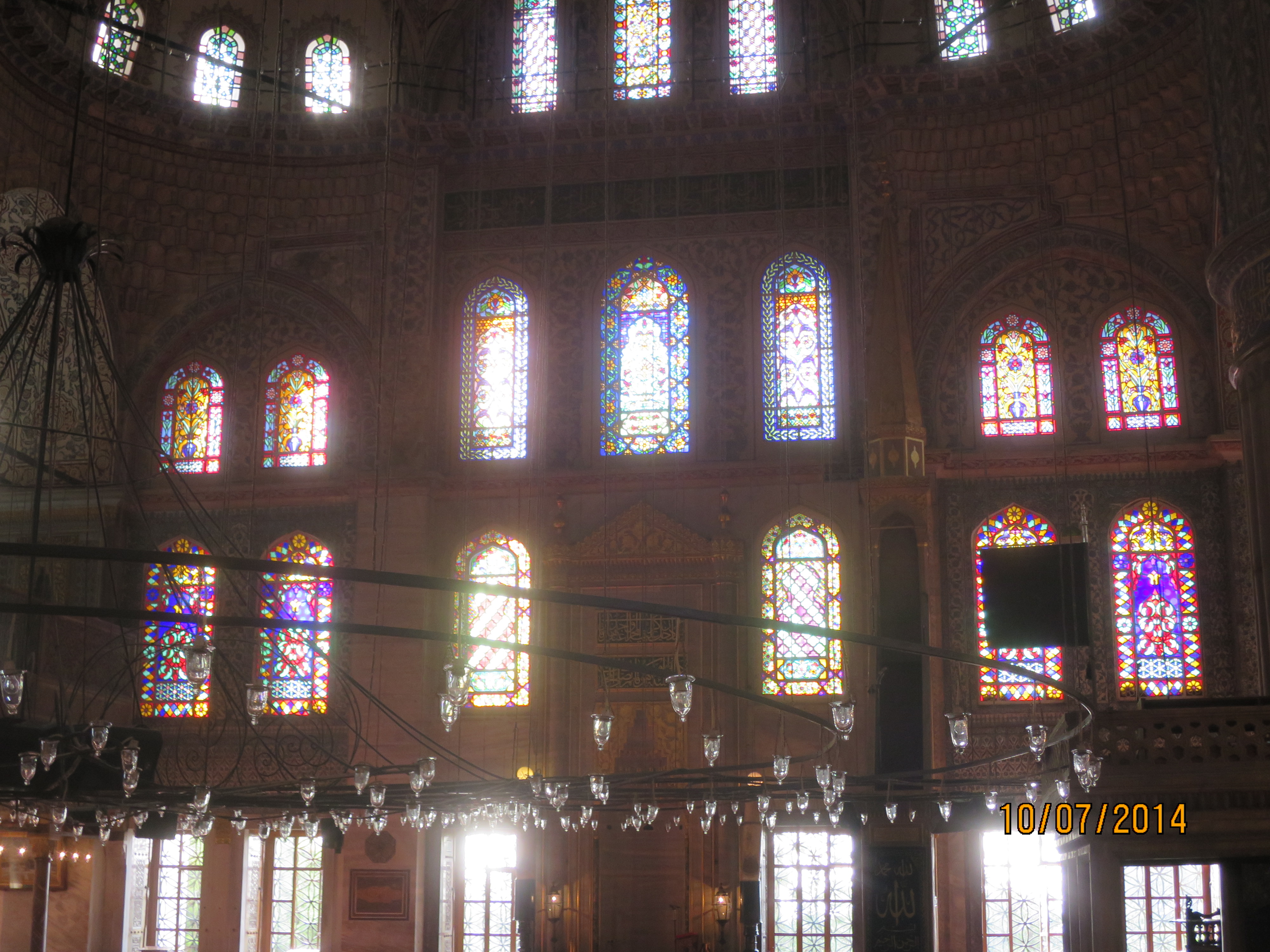
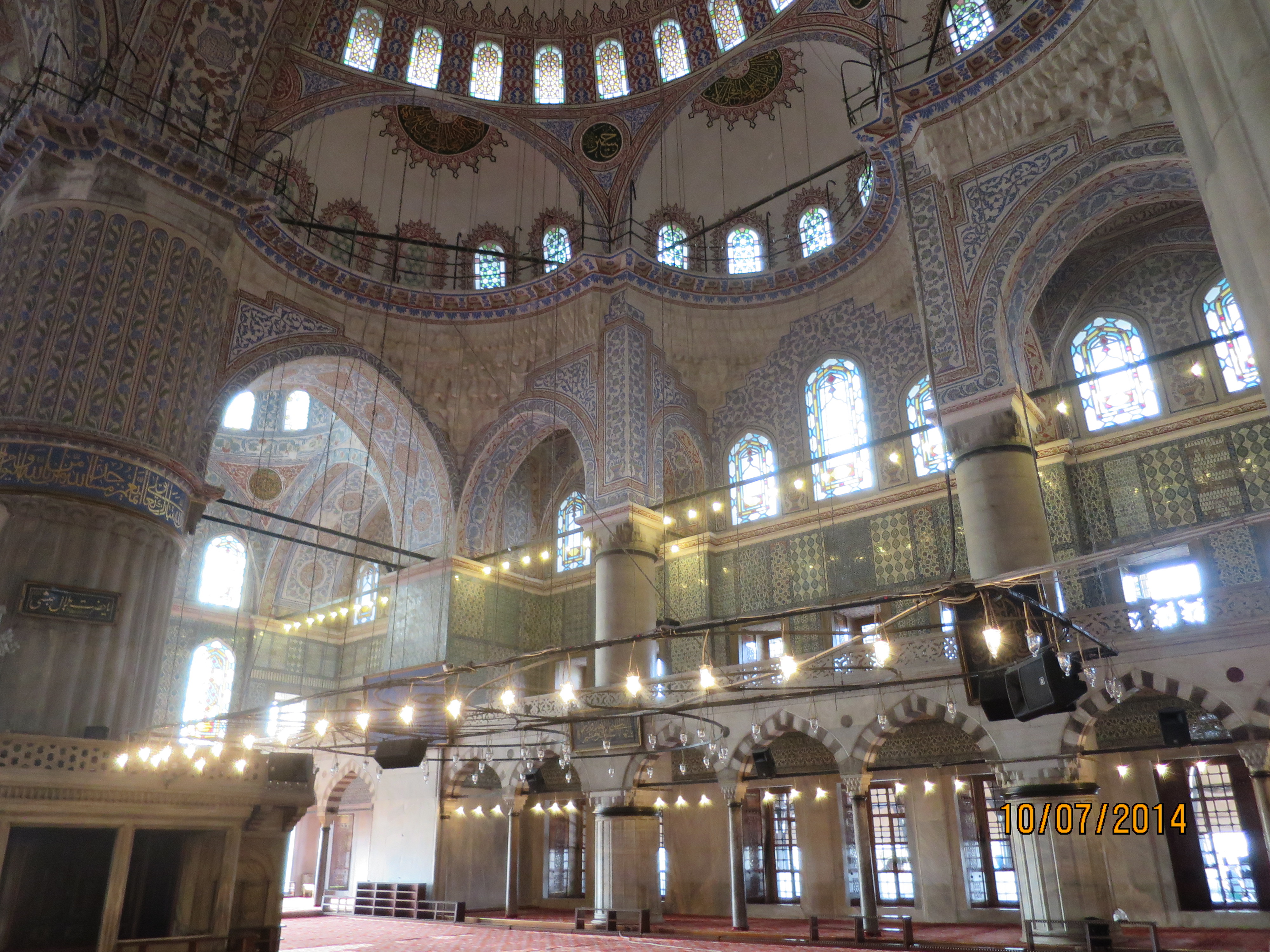
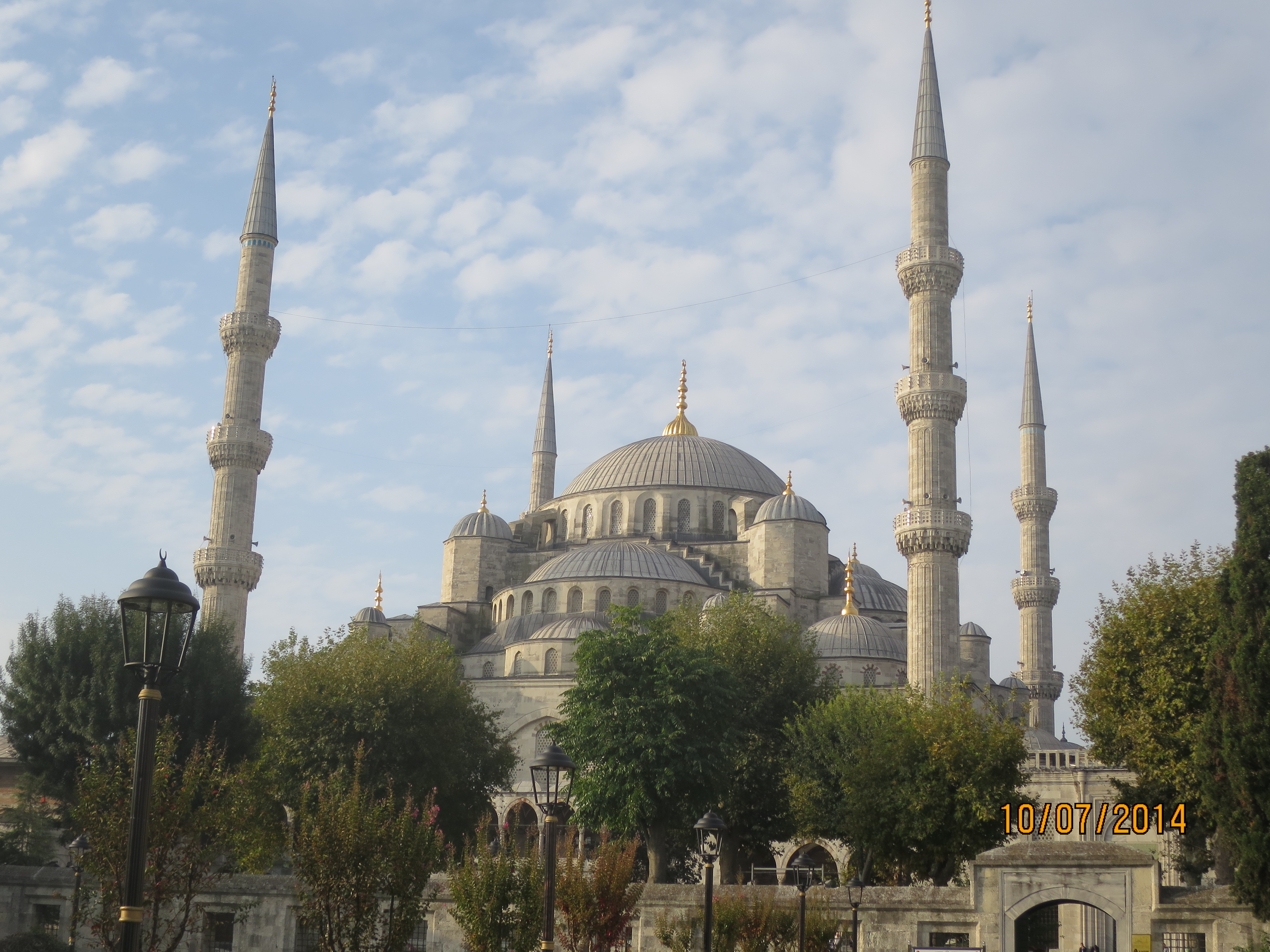
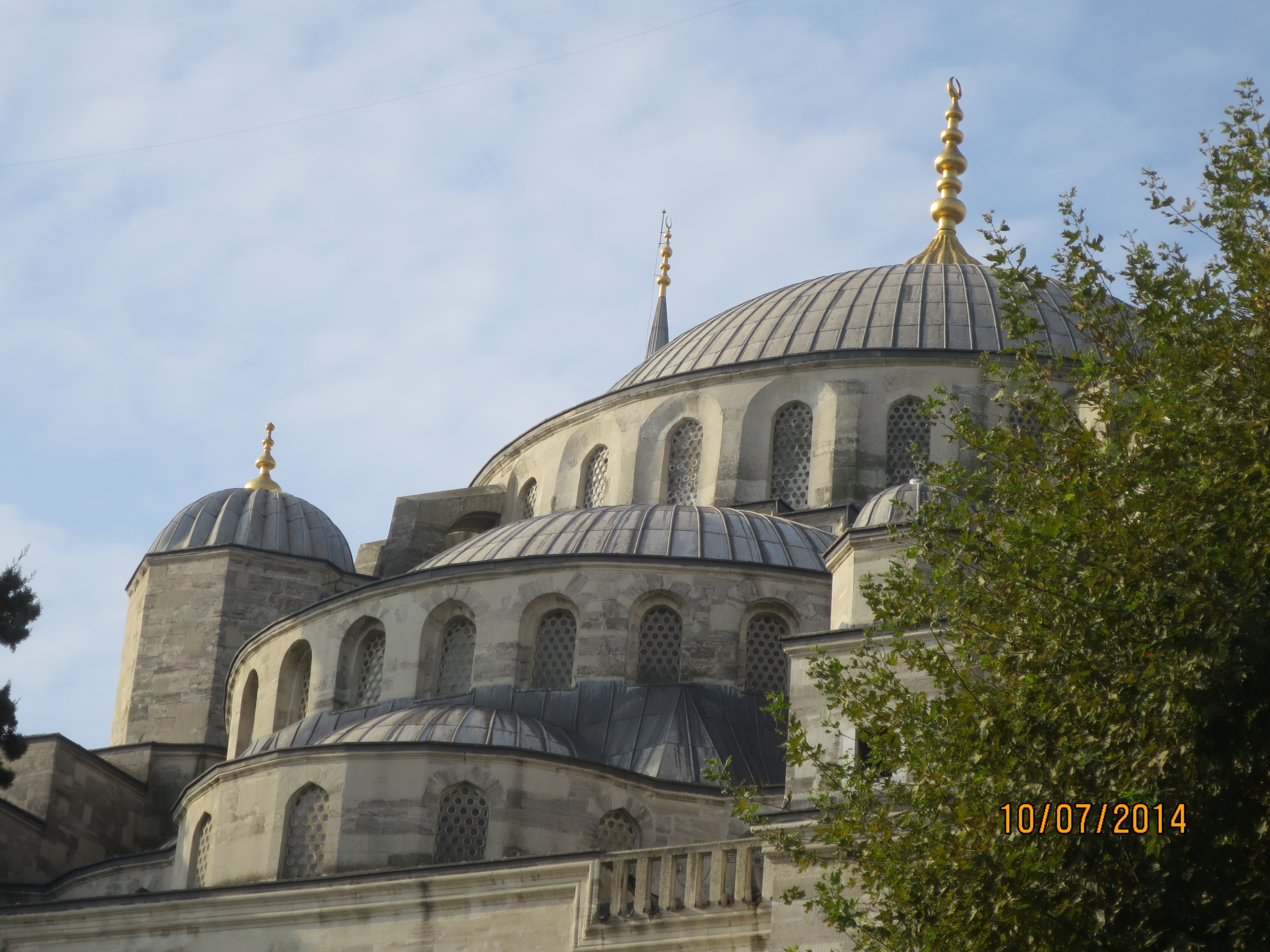
Super pix!!